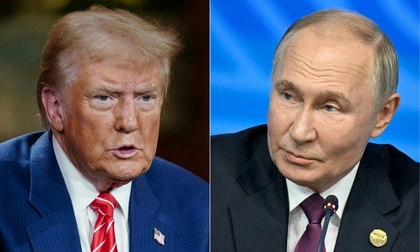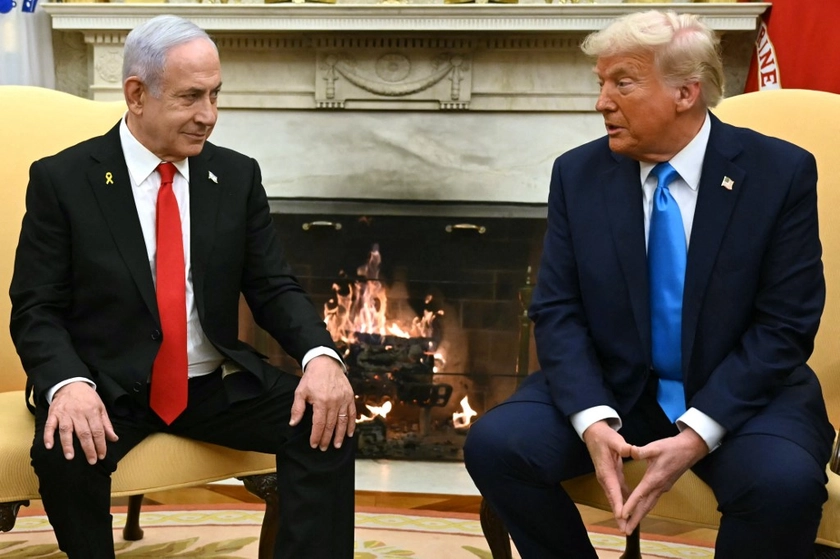Russian President Vladimir Putin was gifted with a BRICS banknote, a souvenir, from the so-called BRICS currency in October 2024 – but it’s unlikely to replace local currencies or the US dollar.
The symbolic banknote, unveiled during the BRICS summit in the Russian city of Kazan, caused a stir on social media, with some claiming that the currency would undermine the US dollar and become an alternative currency for the countries trading with Russia, especially BRICS nations such as Brazil, Russia, India, China, South Africa, Egypt, Iran, Ethiopia and the United Arab Emirates (UAE).
JOIN US ON TELEGRAM
Follow our coverage of the war on the @Kyivpost_official.
Mexico, rumored to have submitted its BRICS membership application, denied the reports.
Talks about an alternative mutual currency started among BRICS nations when Brazil and Argentina claimed that they were starting preparatory work on a common currency, Financial Times (FT) wrote in 2023. Brazil suggested calling the currency “sur” (meaning “south” in Portuguese) and claimed it “could boost regional trade and reduce reliance on the US dollar.”
In 2024, the BRICS countries were in discussion of creating a common currency for them to lessen their dependence on the US dollar. Though the photo of Putin with a BRICS currency banknote became viral, Putin himself claimed the time is not right to impose a common currency.
“In order to talk about creating a single currency, we need to have a high degree of integration of economies and not only that, but we need to achieve their comparable quality and volume,” Putin said during the summit in Kazan, as per Russian news agency TASS.

Russia Presents Demands to US to End War: Capitulation
The economic structures among BRICS members differ too much to be ready for a single currency, Putin added.
Thus, the BRICS currency is unlikely to battle the US dollar’s dominance in the foreseeable future – no earlier than 2050, as Russia’s Gazprombank noted in its blog.
Not About BRICS’s Banknote – BRICS Financial Services Can Strengthen Russia-Led Trade Bloc
The BRICS note is just the tip of the iceberg. This project is currently not implemented, but other initiatives that will strengthen trade between Russia and the Global South are already in the works.
Russian media TZH reported that one of these is the BRICS Pay system, an alternative to the Visa and Mastercard payment systems scheduled to launch by the end of this year. Another initiative is the Russian payment system MIR, which is under Western sanctions.
During the 2024 BRICS Kazan summit, the member states also agreed to create a group of financial services in a memorandum signed by all countries:
- BRICS Clear – a depositary inside the BRICS countries to manage securities and create a single financial market for the member states
- BRICS Grain Exchange to trade grain between countries
- BRICS Diamond Exchange to trade the commodity between the countries
- BRICS investment platform: Putin announced it during the summit to boost the capital market between the BRICS economies but did not specify the details
- An initiative to exchange information and technologies between BRICS entities that enable lighter tax regimes so that BRICS nations could “exchange developments in the creation of logistics hubs, localization of industrial production and conditions for residents.”
To avoid sanctions and decrease the need to spend foreign currencies or Russian rubles, Russia is trying to provide barter trade with China – Russia already has some experience in this with Pakistan, according to TASS, where TZH said Russian chickpeas and lentils would be exchanged for Pakistani tangerines, rice and potatoes.
Russian-led efforts to bolster BRICS’s financial and trade cooperation is another trend of geopolitical fragmentation the International Monetary Fund (IMF) mentioned in its October 2024 World Economic Outlook.
Though global trade has not deteriorated, the IMF reported “signs of geoeconomic fragmentation” in the global economy, with “more trade occurring within geopolitical blocs rather than between them” that started after Russia invaded Ukraine with the former targeted for sanctions.
“When the averages for the periods 2017 to 2022 and 2022 to the first quarter of 2024 are compared, goods trade growth is observed to have declined by approximately 2.5 percentage points more between geopolitically distant blocs than within blocs,” the report writes.
Meanwhile, the IMF slashed its economic forecast for Russia’s year-on-year growth in 2025 from 1.8% to 1.3% in terms of real GDP.
The Russian economy is facing high demand with the maximum supply capacity inside the country, alongside increasing inflation and tight monetary policy, Director of the European Department of the International Monetary Fund (IMF) Alfred Kammer said during a press briefing presenting the October 2024 Regional Economic Outlook for Europe.
“What we are seeing right now in the Russian economy and debt: It is pushing against capacity constraints. We have a positive output gap, or you could put it differently – the Russian economy is overheating,” Kammer said in Washington, DC during the October 2024 Annual Meetings.
You can also highlight the text and press Ctrl + Enter











